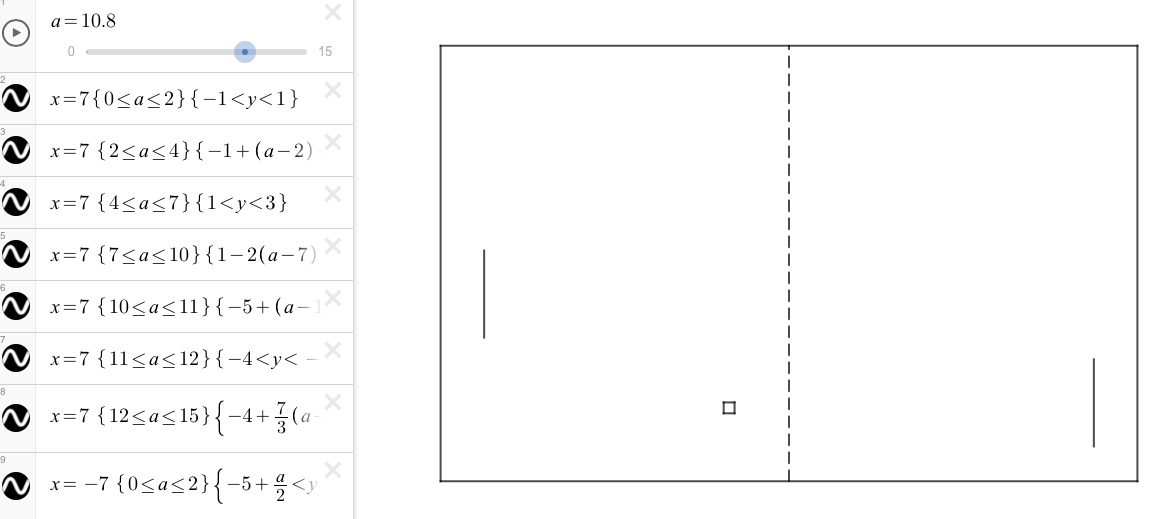At first glance I wasn't sure about this new 3Acts from Dan Meyer but then I got to the end of this video and totally loved it. So good for anyone teaching ratios. And I love the text messages a la Sherlock (as a nice added touch). Now to get the full 3Acts files you will have go to Dan's 101qs.com site and become a member but its worth it.
Curriculum Tags: Gr7, Gr8, MPM1D, MFM1P
 I am always looking for data and professional sports has a wealth of it. Especially now that they are making the bulk of it public. Check out the data that can be found here on this site from the NBA. So many different types of data that surely would be of interest so some young boys (and maybe some girls too). I really like the visual nature of the graphs. For example this one comparison graph can be customized for any number of stats and it always comes up with player pictures and definitions in real time. Thanks to Emergent Math for this one.
I am always looking for data and professional sports has a wealth of it. Especially now that they are making the bulk of it public. Check out the data that can be found here on this site from the NBA. So many different types of data that surely would be of interest so some young boys (and maybe some girls too). I really like the visual nature of the graphs. For example this one comparison graph can be customized for any number of stats and it always comes up with player pictures and definitions in real time. Thanks to Emergent Math for this one.Curriculum Tags: Gr7, Gr8, MBF3C, MAP4C, MDM4U
 Do you need data to show that it is a better deal to buy a bigger pizza instead of a smaller one? How about 74,476 data points. I really have to learn how to program in Python. So many cool things that you can do. Anyway, if you want a cool use of data or a connection to area of a circle, here you go. Complete with interactive graph. And then if that data isn't enough they have collected pizza price data by US city. See that here.
Do you need data to show that it is a better deal to buy a bigger pizza instead of a smaller one? How about 74,476 data points. I really have to learn how to program in Python. So many cool things that you can do. Anyway, if you want a cool use of data or a connection to area of a circle, here you go. Complete with interactive graph. And then if that data isn't enough they have collected pizza price data by US city. See that here.Curriculum Tags: Gr8, MAP4C, MDM4U
http://www.npr.org/blogs/money/2014/02/26/282132576/74-476-reasons-you-should-always-get-the-bigger-pizza
Curriculum Tags: Gr7, Gr8, MBF3C, MAP4C, MDM4U
http://www.yummymath.com/2014/cost-of-movie-tickets-over-time/
I know the show Numb3rs has not been on the air for years but that doesn't mean you still can't use it to make connections between math curriculum and the show. And so here are a couple of sites that take every episode and connect it to the actual math used.
Curriculum Tags: All
http://numb3rs.wolfram.com/
http://www.math.cornell.edu/~numb3rs/
One of the expectations in grade 9 math is to develop the formula for the volume of a pyramid. If you have the proper manipulatives then its easy. If you don't then this video will do the trick (too bad the music is a bit cheesy). Thanks to Erina Shkodra for this one.
Curriculum Tags: MPM1D, MFM1P
https://www.youtube.com/watch?v=OUDjY6vJ8pw
The connection to math may not be obvious right away for this one but I think all of the double negatives means you could use this to simulate multiplying by negative one repeatedly and thus either have a positive or negative answer. Thanks to Dale Wilson for this one
Curriculum Tags: Gr8
https://www.youtube.com/watch?v=6CGyASDjE-U
This clip from the movie Pay it Forward could be a great introduction to exponential growth. Whether it be in Grade 8 or even as a minds on for dealing with exponential functions in grade 11 or grade 12. Thanks to Andrena Misener for this one
Curriculum Tags: Gr8, MCR3U, MAP4C, MHF4U
http://www.youtube.com/watch?v=N0HTneOLrEc












